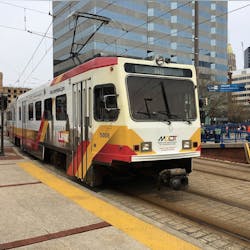Maryland DOT proposes $3.3 billion in cuts – what does it mean for transit?
Maryland Department of Transportation (MDOT) released its proposed six-year spending plan that reflects steep cuts to operating and capital budgets to help bridge a $3.3 billion gap. While all divisions across MDOT will see reductions in their six-year budgets, MDOT says the proposal maintains “an essential focus on safety, maintenance and strategic investment.”
In an opening letter addressed to Maryland residents at the beginning of the Fiscal Year (FY) 2024-FY 2029 Consolidated Transportation Program (CTP) proposal, Maryland Transportation Secretary Paul J. Wiedefeld explained MDOT’s expenses are expected to increase seven percent annually but revenues are only expected to increase by one percent. MDOT notes increased construction costs and increases to its operational budget driven by wage growth and contractual increases, coupled with declining revenues from the fuel tax and transit, are factors behind the budget shortfall. Intensifying the challenge is the state’s commitments to meet MDOT modal administration funding and federal grant obligations, including funding for Washington Metropolitan Area Transit Authority (WMATA), required funding for the Purple Line and matching funds for federal grants, including a grant for the Frederick Douglass Tunnel.
“This is not a new problem for our state,” explained Secretary Paul J. Wiedefeld. “In 2020, the Department of Legislative Services identified that Maryland's transportation program had a structural issue with operating costs increasing faster than overall revenues. Since 2020, these issues have been exacerbated by historic inflation impacting labor and materials costs, depleted COVID-19 relief funding and the gradual decline of transportation's largest revenue source – motor fuel tax revenue."
How the proposed cuts impact Maryland transit
Maryland Transit Administration (MTA) represents more than a third of MDOT’s spending in the CTP. MTA’s operational funding will be reduced by eight percent, or $98 million, to $1.2 billion while its capital budget is being reduced from an initial $4.63 billion to $4.5 billion in the proposed CTP.
The FY2025 operating budget will maintain the size of the workforce, maintains investments to rebuild MDOT’s workforce and expand the number of operators and operations supervisor for MTA, maintains core transit service in the Baltimore region and provides additional WMATA funding of $150 million for FY2025 and FY2026 increasing to $250 million in FY2027.
The FY2025 operating will include cuts such as the elimination of MTA commuter bus service, reduction of two MARC Brunswick daily trips to West Virginia and the reduction of operating assistance for Locally Operated Transit Systems by 40 percent.
For the state’s capital expenditures, the CTP includes funding for the planning and design of the Red Line and the Southern Maryland Rapid Transit, fully funding discretionary grants for Mondawmin Station, Penn-Camden Connector, Frederick Douglass Tunnel and Baltimore Penn Station and fully funding the Purple Line project.
To balance the CTP, MTA will delay or cancel funding for bus upgrades, including the downtown Baltimore hub and the transit priority initiative, delay MTA light-rail, MTA Metro and MARC stat of good repair projects, as well as lower MTA’s funding for state of good repair projects below the level required by the Maryland Transit Safety and Investment Act and delay the administration’s transition to zero-emission buses.
For highway and transit expansion projects, MDOT says it intends to develop a project prioritization system that will evaluate project benefits in terms of meeting state transportation goals relative to cost. This system will be used to help prioritize projects included in future CTPs.
“We must tighten our belts and make tough decisions now to create a sustainable, balanced budget that affirms our transportation priorities and makes key investments to grow Maryland's economy. That's exactly what this budget will accomplish,” said Secretary Wiedefeld. “Ultimately, we know a long-term solution is going to take everyone – our federal, state and local officials and our community partners – working together to redefine how the state pays for transportation projects.”
About the Author

Mischa Wanek-Libman
Group Editorial Director
Mischa Wanek-Libman is director of communications with Transdev North America. She has more than 20 years of experience working in the transportation industry covering construction projects, engineering challenges, transit and rail operations and best practices.
Wanek-Libman has held top editorial positions at freight rail and public transportation business-to-business publications including as editor-in-chief and editorial director of Mass Transit from 2018-2024. She has been recognized for editorial excellence through her individual work, as well as for collaborative content.
She is an active member of the American Public Transportation Association's Marketing and Communications Committee and served 14 years as a Board Observer on the National Railroad Construction and Maintenance Association (NRC) Board of Directors.
She is a graduate of Drake University in Des Moines, Iowa, where she earned a Bachelor of Arts degree in Journalism and Mass Communication.
